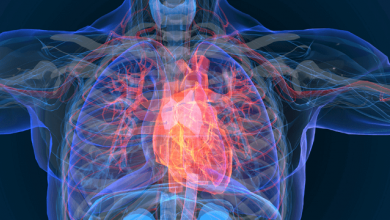Search results
Author(s):
Myung H Park
Added:
3 years ago
Author(s):
Sabu Thomas
,
Andrew J Boyle
,
Gary S Francis
Added:
3 years ago
Acute decompensated heart failure (ADHF) is a syndrome defined by worsening fatigue, dyspnea, or edema that results from deteriorating heart function and usually leads to hospital admission or unscheduled medical intervention.1 Among patients over 65 years of age it remains the leading cause of hospital admission (>1 million admissions per year in the US alone), has an exceptionally high rate…
View more
Author(s):
Michael D McGoon
Added:
3 years ago
Pulmonary hypertension (PH) is a hemodynamic condition defined by pulmonary arterial systolic pressure (PASP) above an upper limit of 35mmHg, or by pulmonary arterial mean pressure (PAMP) exceeding 25mmHg at rest. Pulmonary arterial hypertension (PAH) is present when pre-capillary pulmonary vascular pressure is elevated in the absence of pulmonary capillary wedge pressure >15mmHg, such as that…
View more
Author(s):
Abdulah Alrifai
,
Mohamad Kabach
,
Jonathan Nieves
,
et al
Added:
3 years ago
More than 10 million Americans suffer annually from angina.1 For decades, most of the attention has been focused on epicardial coronary artery disease (CAD). In a European registry of 11,000 stable angina patients, 65% of women and 32% of men had no obstructive CAD (<50% stenosis); however, multiple other studies have demonstrated only 30% of patients have significant obstructive epicardial…
View more
Author(s):
Richard E Katholi
Added:
3 years ago
Contrast-induced nephropathy (CIN) represents an increasing healthcare burden and challenge as the frequency of diagnostic imaging and interventional studies increase, particularly among populations at risk of developing CIN. As the population ages, decreased renal function and increased atherosclerotic cardiovascular disease become more prevalent. Increasing levels of obesity with resultant…
View more
Author(s):
Robert A Vogel
Added:
3 years ago
There are about 65 million Americans (or 20–25% of the population) with hypertension.As a top line figure that is probably a little low as it uses the rather strict definition of high blood pressure as being 140 over 90.Hypertension is also very strongly age-related, and as we get older that frequency goes up a lot. Essentially, 95% of Americans will be hypertensive in their lifetime. It is a…
View more
Author(s):
Michael D McGoon
Added:
3 years ago
Pulmonary hypertension (PH) is a hemodynamic condition defined by pulmonary arterial systolic pressure (PASP) above an upper limit of 35mmHg, or by pulmonary arterial mean pressure (PAMP) exceeding 25mmHg at rest.1,2 Pulmonary arterial hypertension (PAH) is present when pre-capillary pulmonary vascular pressure is elevated in the absence of pulmonary capillary wedge pressure >15mmHg, such as…
View more
Pulmonary Thromboendarterectomy
Author(s):
Stuart W Jamieson
Added:
3 years ago
Article
Author(s):
W Kevin Tsai
,
Kathleen M Holohan
,
Kim Allan Williams
Added:
3 years ago
Coronary artery disease (CAD) represents a tremendous financial and health burden as the leading cause of death in the US.1 Acute coronary syndrome and its subsequent manifestations, including heart failure and need for cardiac transplantation, are associated with significant morbidity and mortality. Hypertension, dyslipidemia, tobacco abuse, diabetes, chronic kidney disease, and family history…
View more
Author(s):
Robert C Hendel
Added:
3 years ago
Background
Heart disease, specifically coronary artery disease (CAD), is the leading cause of death and disability among both men and women in the US. Reductions in blood supply due to narrowings of the arteries that supply the heart muscle with oxygen and nutrients (coronary arteries) result in chest pain and shortness of breath and may lead to permanent scarring of the heart muscle, as in the…
View more











